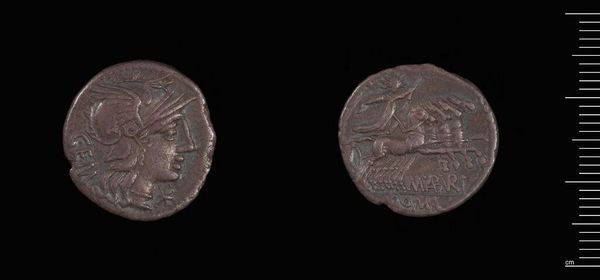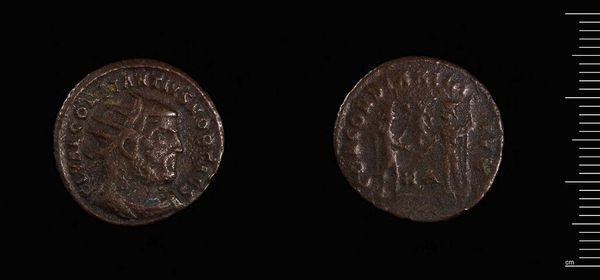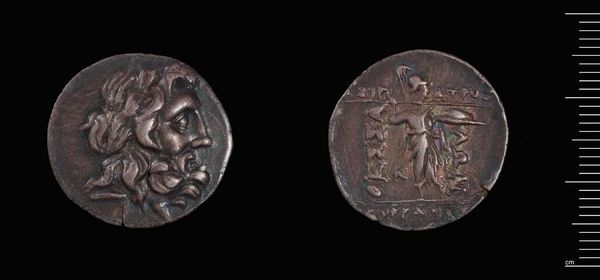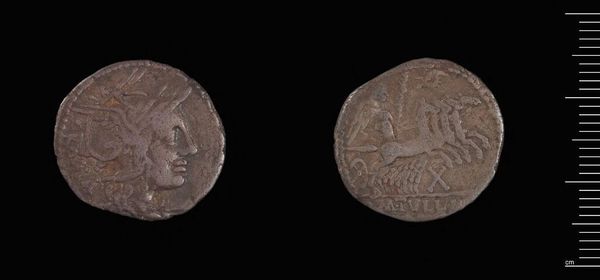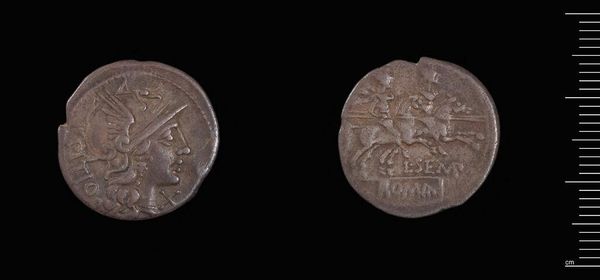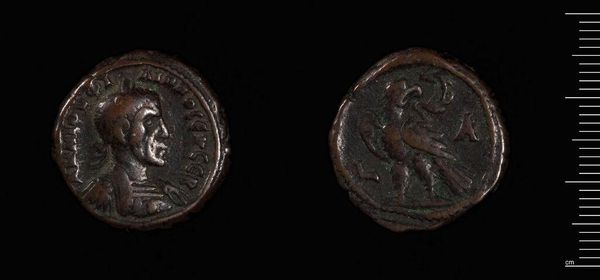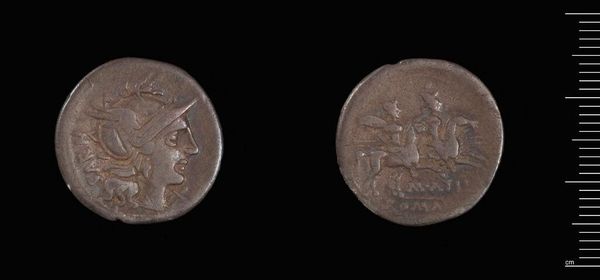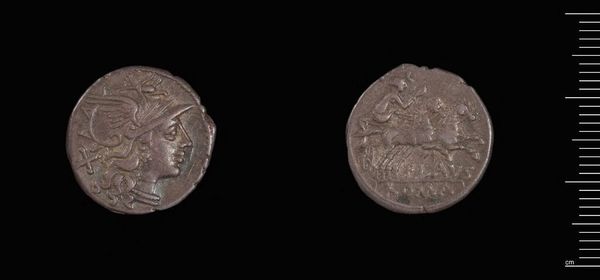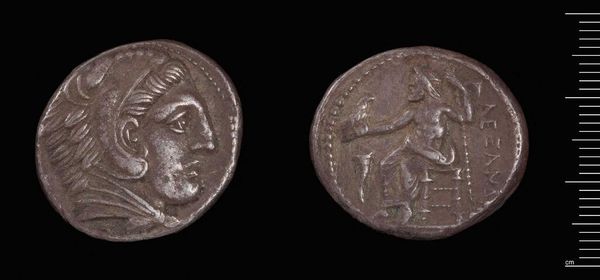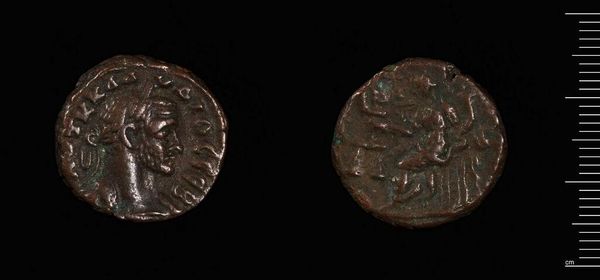
Dimensions: 5.43 g
Copyright: CC0 1.0
Editor: Here we have a coin, "AE2 of Magnentius," from the Harvard Art Museums, with a weight of 5.43 grams. It's incredible to think of the lives it might have touched. What strikes you about its design and composition? Curator: The coin's circular form immediately signifies wholeness and continuity, disrupted only by the deliberate inscription along its edge. Note how the incised portrait and equestrian scene on each face are rendered with a clear emphasis on line. Editor: The lines do seem very deliberate! Is there any sense of symbolism behind the figures chosen? Curator: The formal arrangement of the rider, the horse, and the fallen figure creates a dynamic relationship. Observe how the artist employs varying depths of relief to distinguish foreground from background, achieving a surprising illusion of depth within such a small space. Editor: So, the depth and detail are what give it meaning? Curator: Precisely. It's through careful attention to these formal elements—line, relief, and spatial arrangement—that we begin to decode the coin's inherent structure and, perhaps, its intended message. Editor: I see how analyzing the form reveals so much. Thanks! Curator: My pleasure. The smallest of objects can reveal much about their intended context and purpose.
Comments
No comments
Be the first to comment and join the conversation on the ultimate creative platform.

